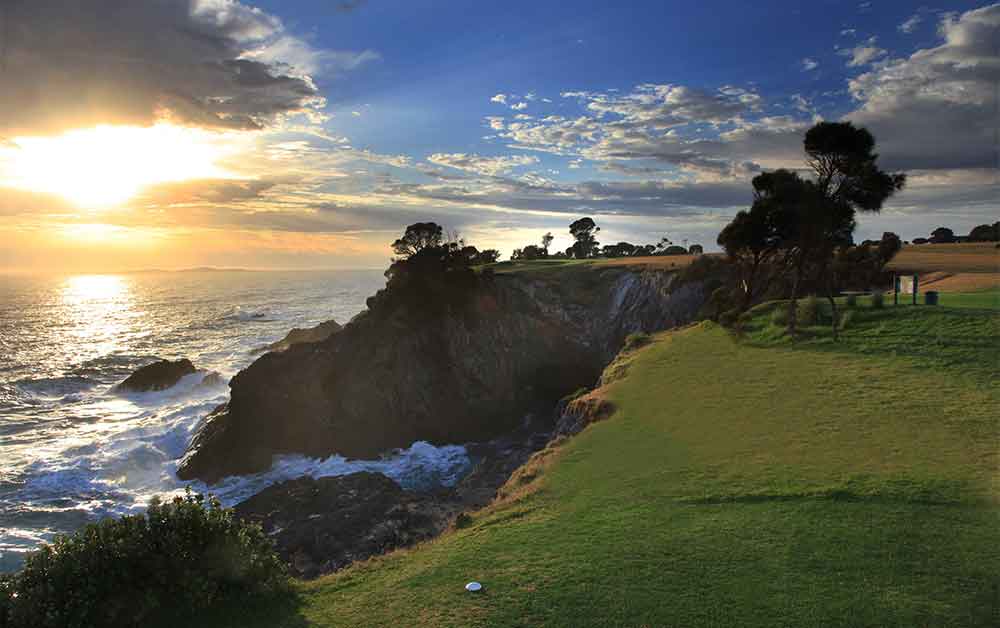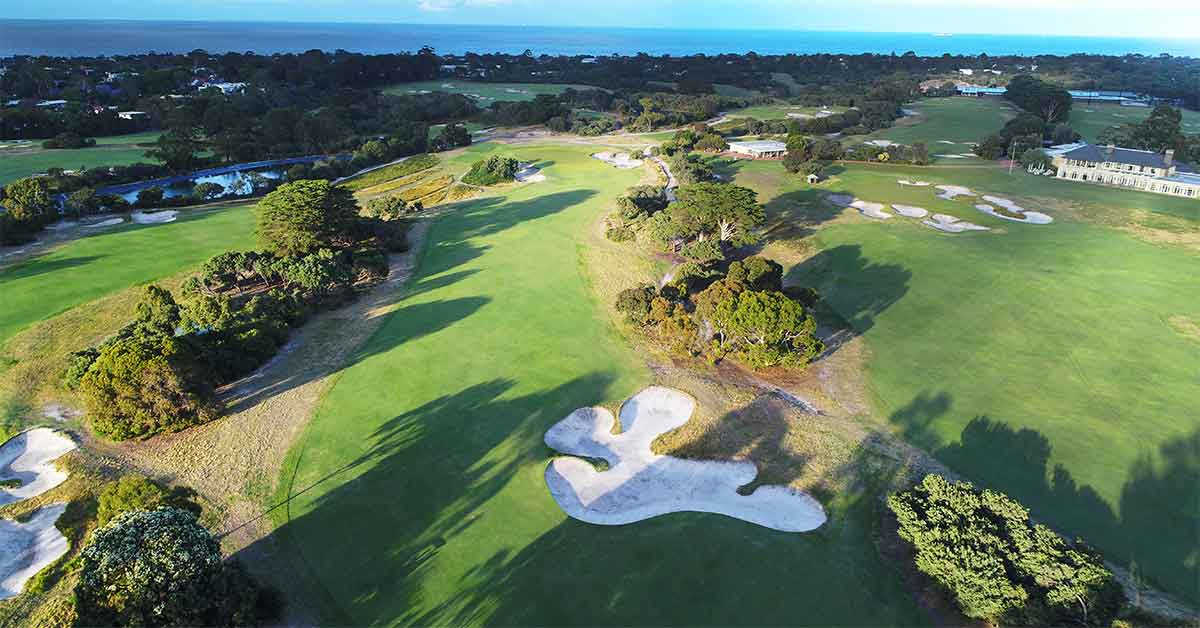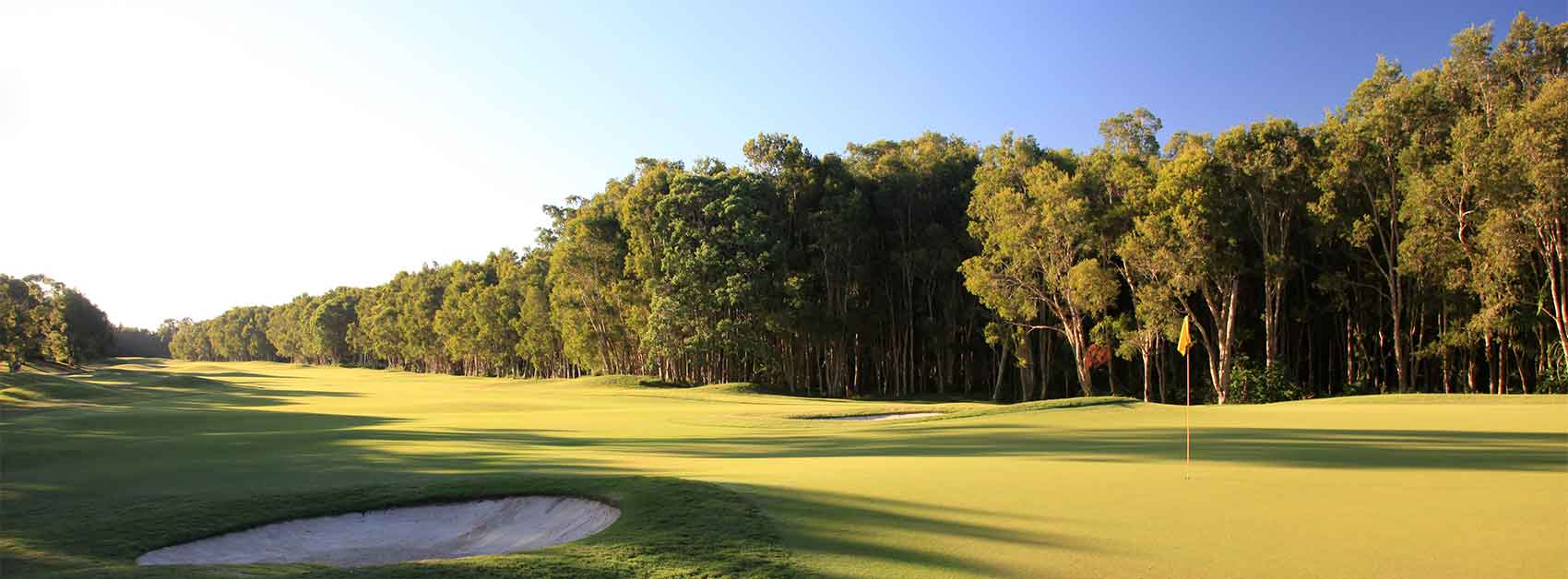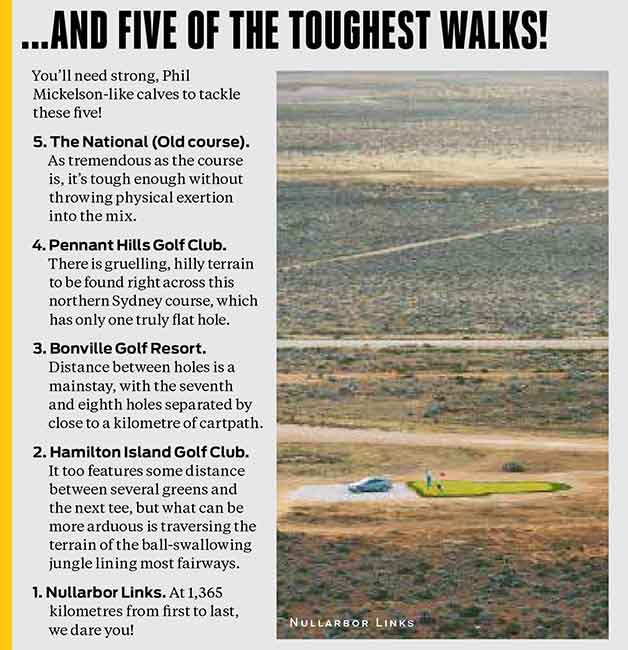As a mid-40s male trying to watch his health, these days there’s a number I pay more attention to at the end of each round than my score or handicap change. It’s how many steps I’ve taken.
I’m a walker. I would have played 200 or more rounds of golf as a kid before I ever sat in a cart, and the passage of time hasn’t altered that outlook. Sure, there’s a time and a place for golf carts (and plenty of modern courses where they’re essentially a must) and I definitely take one on occasion, but most times I’d prefer to walk. It’s more social, providing the whole group walks, and you just see more of the golf course. Plus it has dual health benefits.
‘Golf is a wonderful sport. It’s in nature, it’s low-risk, it’s a cardiovascular exercise and it just has so many benefits.’ – Anne Young
“Golf is exercise for your mind and body,” says Anne Young, an Adelaide-based pharmacy industry stalwart who began Healthy Conversations – an innovative approach to help people when it comes to talking about sensitive health issues. Her work put her in touch with the community as well as health experts from a variety of areas and centred on better connecting the two. “They were struggling a lot to get the brilliant [knowledge] they’ve got into the hands of those that should know it.”
For golfers, Young’s work focuses on driving home the message of the benefits of walking and playing golf by sharing evidence-based and unbiased information.
“I’ve just had so much joy from people telling me, ‘I never knew that, Anne. I did not know that a round of golf – even if you’re a bad golfer – is 10,000 to 12,000 forward steps.’” Young says, adding that one of the flow-on effects of a bad round is that you ‘win’ because you’ve almost certainly taken more steps. “It is a wonderful sport. It’s in nature, it’s low-risk, it’s a cardiovascular exercise and it just has so many benefits. But a lot of people I know, most have never said, ‘I’ve just done some exercise on the golf course,’ they just whinge about their score.
“My pillars work on: sleep, nutrition, movement and social inclusion… Depending on whether they’ve got chronic illnesses, people are highly likely to sleep better and eat better if you’ve gotten up and moved. There’s so much evidence-based [findings] to say [golf is] a good sport, it’s a healthy sport and it’s great for your mind and your body.”

A Good Walk Unspoiled
What makes a great walk? It’s as individual as the game itself. The view or terrain my foursome likes or that I like might not do anything for you, and vice versa. As golfers, we all look at things differently. The vista might not do it for you but we love it. Or a calf-grinding, hilly course could appeal to the fitness fanatics but not so much to the leisurely stroll set. Or perhaps individual golfers might wax and wane from round to round – seeking a comfortable amble one day and a tough trek the next.
For the purpose of this exercise (pun intended), we’re going to assume most golfers find the game demanding enough without adding high levels of physical exertion to the mix. Chances are, when it comes to great walks, the majority of golfers are more impressed by gorgeous surroundings than they are by an elevated heart rate.
With that in mind, here are 10 courses Australian Golf Digest thinks you’ll enjoy perambulating for 18 holes, and just how much leg fuel you’ll need to bring to the first tee.

Royal Melbourne, VIC
How can we not include the best course in the land? Besides, wandering the most famous 36 fairways in Australia, whether with clubs or without, is always a study of the scale and scope of the great course. Even golfers who attend tournaments at RM without ever playing there will gain a sense of its magnitude. But if you are just walking and not playing, the same rule applies: steer clear of the ti-tree.
Phil Mickelson calf-factor: 4/10
Barnbougle Dunes & Lost Farm, TAS
The walk from the Dunes’ fourth green to the fifth tee is worth the trip alone, to say nothing of the 38 magnificent holes (soon to be 52) along Tasmania’s north-east coast. The narrow pathway gives golfers their first glimpse of Anderson Bay and the town of Bridport as well as the next two holes. Large gaps between holes are rarely desirable in course architecture, but here’s one instance where no one would complain if it were a little longer, such is the majesty of the view. Putting aside that particular walk, strolling between the dunes of both courses is as good a saunter as it gets.
Phil Mickelson calf-factor: 3/10
Royal Adelaide, SA
It is golf’s cathedral in the pines. Royal Adelaide typifies the term ‘pleasant’ as you wander its fairways. It’s not physically taxing yet there is ample undulation to make the course interesting, but rarely do you notice the inclines. And besides, crossing the suburban train track twice during your round is far more fun when done without motorised assistance.
Phil Mickelson calf-factor: 2/10
New South Wales, NSW
We challenge any golfer to reach the top of the hill at the famous par-5 fifth hole and not be impressed. It’s a panorama of the birthplace of our nation and a phenomenal look at not just a pair of spectacular holes but of one of the most scenic chunks of coastline there is. The rest of the course is a solid walk, marked by several steep ridges up, down and across that do require some energy in the tank.
Phil Mickelson calf-factor: 6/10
Cape Wickham, TAS
OK, so the weather is volatile and the wind can be brutal, but what’s not to love about playing the best public-access course in the country upon a rock in the middle of the ocean? That’s King Island: remote, isolated… and phenomenal.
Phil Mickelson calf-factor: 4/10

Twin Waters, QLD
Sunshine Coast and Gold Coast resort courses are usually synonymous with carts but they don’t have to be that way. One of the better walks among the leading layouts is Twin Waters. The overall course is almost completely flat but many fairways are rippled and greens raised like on the great British links. More hints of that mode of course come via Peter Thomson’s pot bunkers. Links-style golf in a warmer climate – what’s not to like?
Phil Mickelson calf-factor: 2/10
Bunbury, WA
There’s a reason why more flights are heading directly for the Margaret River region – when flying interstate is normal again, of course. It’s a truly underrated corner of the country, for golf or other attractions. Among the best courses is Bunbury, a past Top 100-ranked layout in the town of the same name. There’s some movement to the terrain but the walk is truly pleasant and far from arduous.
Phil Mickelson calf-factor: 4/10
Alice Springs, NT
A nod to our original desert layout and arguably the most remote of our best courses. The weather might often be inclement but the walk is manageable across terrain and amid scenery that sets it apart from 99.9 percent of Australian courses.
Phil Mickelson calf-factor: 2/10
Narooma, NSW
If you like amazing views, you’ll love Narooma. Yet perhaps the course’s best attribute is its variety. You’ve seen photos of – or walked – the stunning clifftop holes of the front nine, but much of the back nine covers beautiful wooden, inland terrain with some fun undulations. There’s even a Sandbelt-esque feel to a couple of holes. The coastal holes offer the style but the more secluded holes are full of substance.
Phil Mickelson calf-factor: 4/10
Ratho Farm, TAS
This one comes with something of an asterisk, only because to do it properly, the walk simply has to be taken with hickories in a skinny leather carry bag slung over the shoulder. Double points if you also don 1800s attire. The oldest golf course in Australia is flat with some excellent holes beside the Clyde River and is a majestic and important sliver of golf history.
Phil Mickelson calf-factor: 1/10

Do you agree? E-mail your favourite courses to walk to [email protected]
